Peony
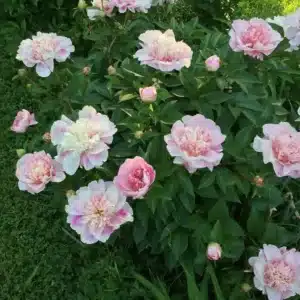
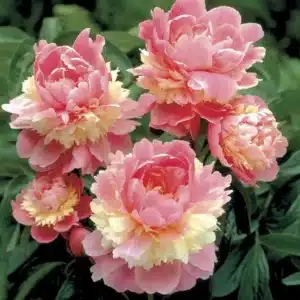
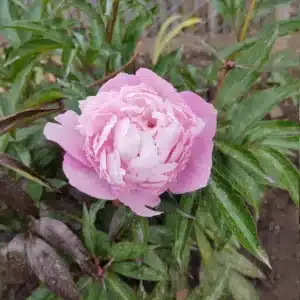
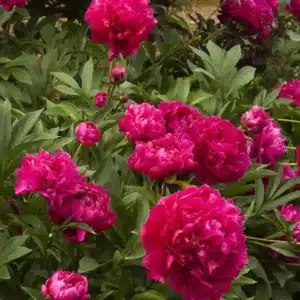
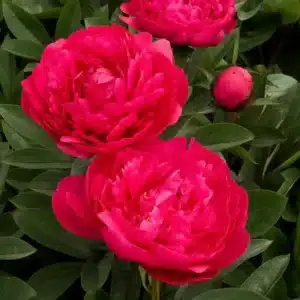

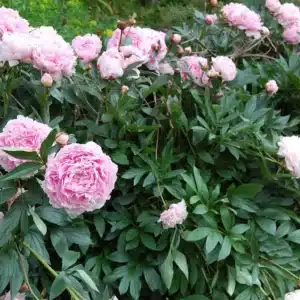
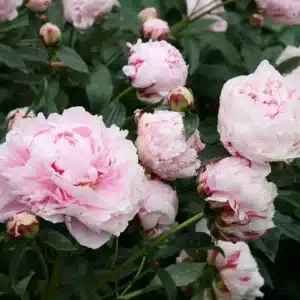
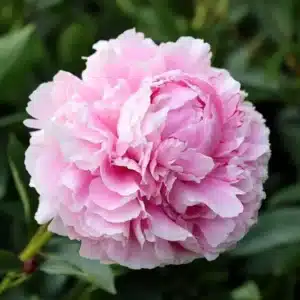
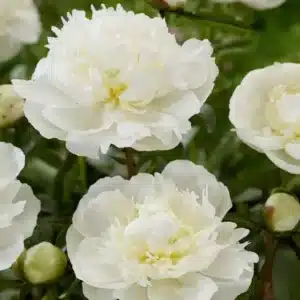
Peonies must be planted with the roots spread into the upper 4 inches of the bed with the main part of the plant at or near the soil surface level. Newly planted peonies should be covered by two inches of loose mulch such as shredded cedar. The named cultivars will not come true from seed. Propagation by stem cuttings is possible. If seed propagation is desired seeds collected from mature flowers should be stratified by refrigeration for three weeks. The seeds are implanted at the surface of the planting medium maintained at temperatures of 50 to 60 degrees F. The seeds and germinated plants require supplemented light. A soil pH of 5.5 to 7 assists germination and supports the young plants. Peonies are commonly available rooted for purchase. Peonies are often purchased as bare-root plants shipped in a dormant state in the fall. The mature plants prefer moist but well-drained soil with a neutral pH or mildly acidic pH and added organic matter. The best time to plant is early fall to allow the plants to become established before winter.
Peonies require consistent soil moisture. Peonies do not require staking. Peonies are long-lived once established with some plants documented to have survived 50 years. Once established peonies do not tolerate transplantation, so the location of the newly planted peonies should be carefully planned. The spent flowers are removed as they fade. The plants should be cut back after the first hard freeze. The dead stems and leaves should be collected, removed, and discarded. The plants should be covered with high-quality shredded pine bark mulch after the plants have been cut back.
Organic fertilizer should be applied to the root zone at the time of planting. A balanced slow-release fertilizer is most commonly applied in the spring. Due to risks related to possible spreading leaf fungal disease water-based liquid fertilization is not advised.
The spent flowers are removed as they fade. Routine pruning is not needed during the growing season. The plants should be cut back to the ground after the first hard freeze. The dead stems and leaves should be removed and discarded to avoid spreading leaf diseases. Leaves damaged by a fungal disease may be removed at any time.
Botyrtis blight which is a leaf and stem disease of peonies that can affect the leaves, stems, and flowers. It is caused by the fungus, Botrytis paeoniae and is the most common disease of peonies. Phytopthora blight is a less common leaf disease that affects peonies. Treatment for both fungal leaf diseases is timely application of fungicide. Plants grown in a bed with a known fungal infestation should be treated by an initial fungal spray applied to the plants when the tips of the stems and leaves break through the ground in the early spring. A second application, 2 weeks later, and applications of antifungal treatment should be applied every 14 days thereafter until mid-June. Chlorothalonil (Daconil), mancozeb, maneb, and thiophanate methyl have been reported to be effective. Potential insect pests include thrips, scale, mealybugs, bulb mites and hoplia beetles. Treatment of insect pests is the timely application of insecticide. It is critical to read the label and other package instructions before mixing or applying chemicals. Powdery mildew is common on the leaves in the fall but is not harmful to the plant.









